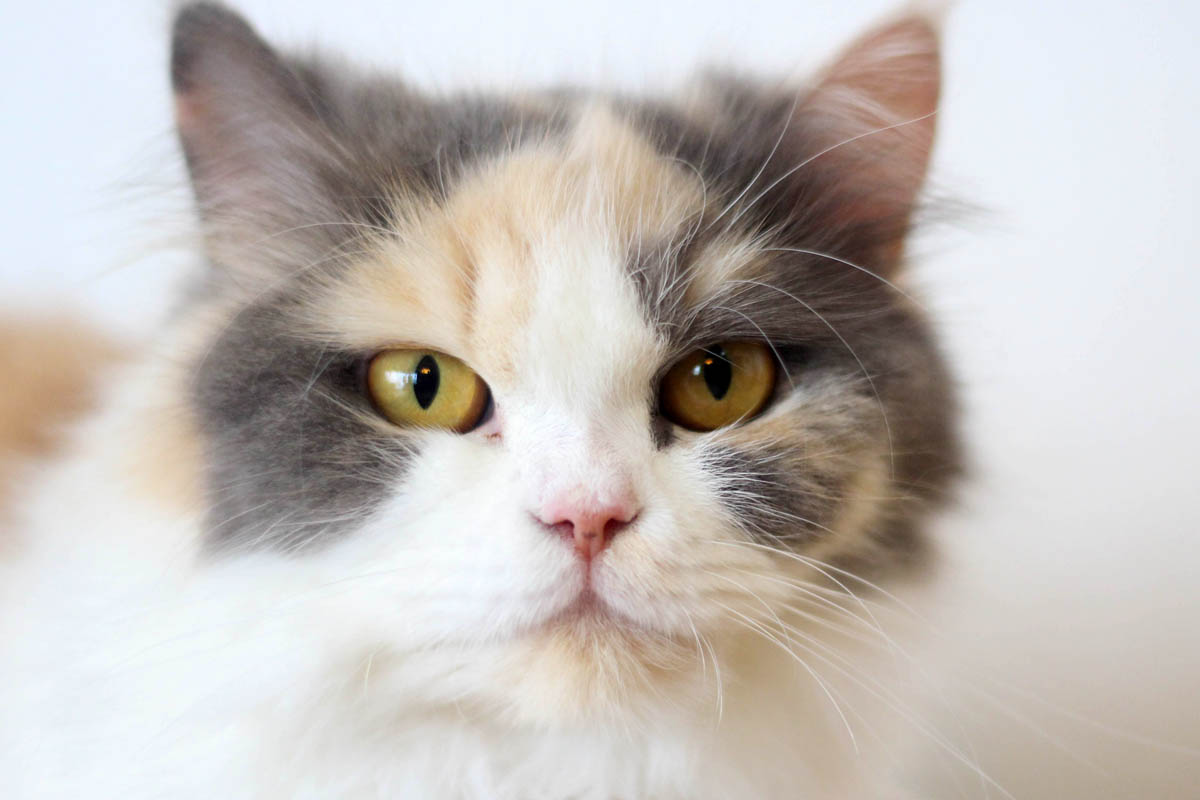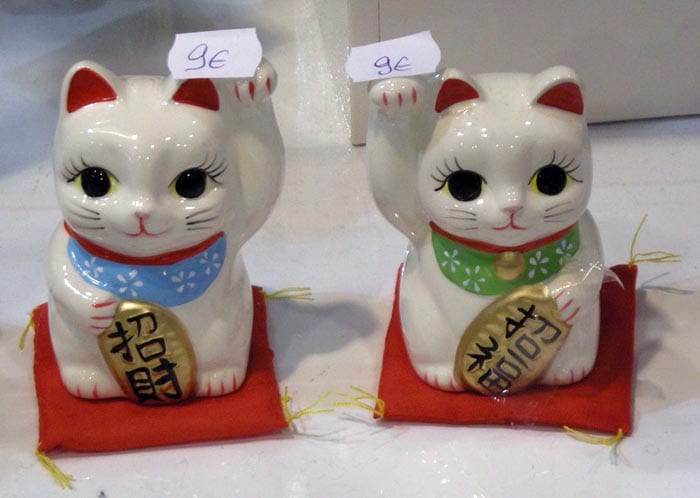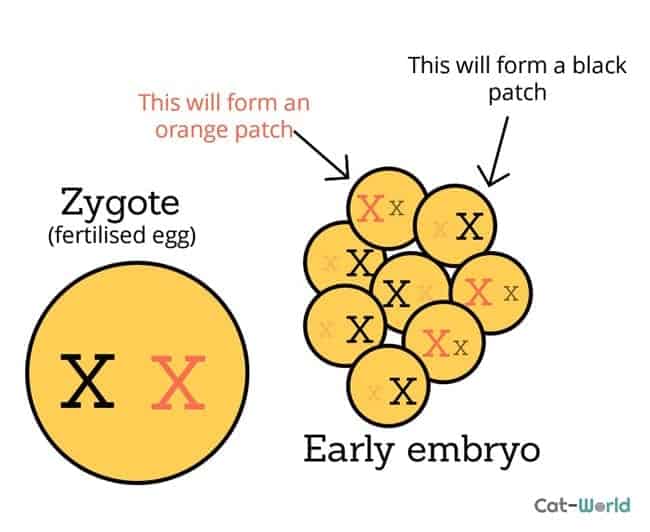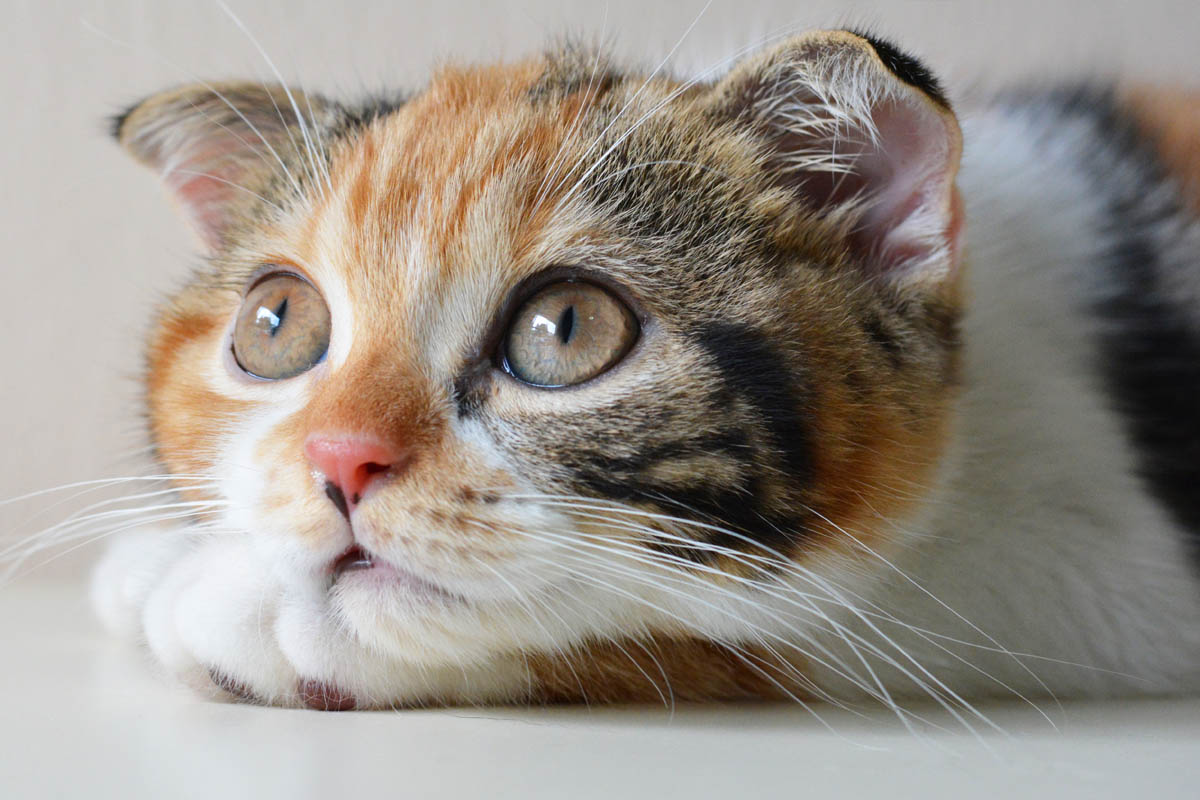Calico and caliby are both coat colours and patterns that are widespread among random-bred as well as purebred cats. Both the caliby and the calico coat pattern/colour combination occur almost exclusively in female cats, which we will go into later.
Calico and caliby cats share some similarities that may lead to confusion. Both patterns are characterized by a tri-colour coat consisting of white and red, with the addition of a third colour that can vary between black, grey, brown, cinnamon, lilac, or fawn.
Dilution:
Both calico and caliby cats carry the dilution gene, which alters the colour of the coat. If the cat also carries the dilute gene, black is diluted to grey, chocolate to lilac and red to cream. The process of dilution in cats occurs due to the deletion of a single base pair in the melanophilin (MLPH) gene. This gene encodes melanophilin, which is a carrier protein responsible for the proper distribution and transportation of pigment granules in pigment-producing cells called melanocytes. These cells contain melanosomes, which synthesize and store melanin before it is transported out of the cell via dendrites to adjacent keratinocytes – the cells responsible for producing the protein keratin.
In cats with dilute colouration, the process of melanin synthesis remains unchanged, but the pigment granules in the hair become enlarged and unevenly deposited. This leads to the formation of melanin clumps of varying sizes along the hair shaft, as well as areas lacking in pigment, resulting in a coat colour that appears lighter than it actually is.
White spotting gene:
The white on both the calico and caliby is due to the white spotting gene that prevents melanocytes (pigment-producing cells) from proliferating fast enough. Pigment cells are unable to spread as far as they do on other, non-piebald cats, leaving areas of non-pigmented fur, typically the legs and underside of the cat.
Calico

The calico coat pattern is a mix of three colours; white, tabby red or cream (dilute) and solid black, brown, cinnamon, grey, lilac and fawn (the latter three are dilute colours)
White:
The white is due to the white spotting gene and is present in both the caliby and calico.
Red or cream tabby:
Tabby red or cream (dilute). Red and cream always consist of tabby because the non-agouti gene does not affect phaeomelanin (red), and therefore all ginger cats exhibit the tabby pattern.
Solid:
Patches of black, brown, cinnamon or grey, lilac and fawn.
Possible calico coat colours:

- Black, red tabby and white
- Chocolate, red tabby and white
- Grey, cream tabby and white
- Lilac, cream tabby and white
- Cinnamon, red tabby and white
- Fawn, cream tabby and white
The most common calico coat colours are white, black and red, followed by its dilute equivalent, white, grey and cream.
The Maneki neko, or lucky cat originated in Japan and is now widely popular in China where it can be found in the doorway of Asian restaurants and shops. People leave beckoning cat charms at the temple as a way to say thank you or to pray for their sick cat or success in business.

Caliby

The caliby is similar to the calico in as much as the coat consists of three colours; white, red or cream tabby and brown. However, the brown, silver or dilute area consists of tabby marking instead of a solid colour, as you can see with Melody, featured above. The term caliby is a portmanteau of calico+tabby (cali-by).
The caliby has tabby markings on both the red or cream and brown, silver or dilute tabby areas. The tabby markings can be mackerel, spotted or classic. Mackerel is the most common tabby pattern.

If the cat only had patches of red or cream, and brown, silver or dilute tabby, she would be a torbie (tortoiseshell + tabby).
Why are most caliby and calico cats female?

Calico cats are almost always female. The red (orange) gene is located on the X chromosome, as the male (XY) only has one copy of the X chromosome, he is either red or non-red. The female (XX) has two chromosomes. If she inherits one copy of the orange gene, and one copy of non-orange (ie; black, grey etc.), both colours will show randomly.
X chromosome inactivation (also known as lyonisation), is a process that occurs in the female cat (as well as all female mammals) in which one X chromosome in each cell, leaving only one active X chromosome in each cell. This ensures that females and males have the same number of X-chromosome genes expressed. X chromosome inactivation is random, which means some areas will be red or cream and some will be black, grey, cinnamon, lilac, brown or silver tabby.
Despite the name ‘tri-colour’, white isn’t actually a colour, but a lack of colour. Calico and caliby cats can only display two pigmented colours, along with white.
What cat breeds are calico or caliby?

As calico and caliby are coat colour and pattern combinations and not a breed, they can be found in random-bred as well as some purebred cats. Breed standards that allow caliby and calico include:
- British Shorthair
- Cornis Rex
- Devon Rex
- Exotic Shorthair
- Persian
- Selkirk Rex
Summary
- Calico cats have a white base coat with patches of tabby red or cream and solid areas of black, grey, chocolate, cinnamon, fawn or lilac.
- Caliby cats have a white base coat with patches of tabby red or cream and patches of brown or silver.
- The calico and caliby pattern occurs almost exclusively in female cats.

